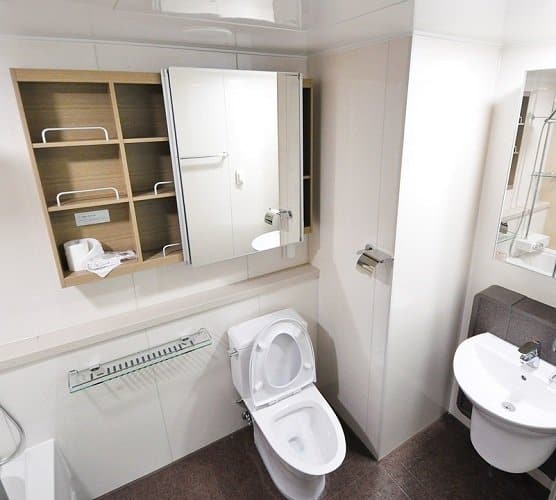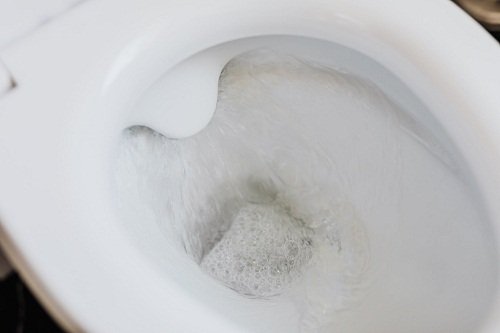The two places in your toilet that always hold water are the toilet tank and toilet bowl. The water in your toilet bowl is essential as it prevents toxic gases and bad smells from returning to your bathroom, which protects you from any health and safety hazards. So, a toilet bowl not filling with water after flush should be a cause for alarm, right?
Several factors can cause this problem, and you’ll be glad to know that you can resolve some of these issues without the help of an experienced plumber. Read on to find out the most common things that cause your toilet bowl or toilet tank to not fill with water.
Reasons Why Your Toilet Bowl Won’t Fill and How to Fix Them
A faulty toilet bowl signifies a deficient part that requires quick fixing. Most times, these faults could be fixed with little technical experience.
Fixing the ensuing problems by yourself not only improves your technical skill against future damages to your toilet but also saves a lot of money.
You will be able to find most of the replacement parts at your local hardware store without much hassle.
1. The Supply Valve Is Closed
The common reason why water fails to get into the toilet bowl is due to the state of your supply or shut-off valve.
This valve is usually positioned behind the tank or at any location by the wall closest to the toilet. It controls the inflow of water into the tank and could easily be turned off mistakenly by any bathroom user.
Solution: Fix the Closed Supply Valve
The only way to fix a shut-off valve that had been closed is to get it open. For toilet models with a push/pull shut-off valve, push the valve to allow water into the tank. On the other hand, when faced with a faulty fill valve, you may need to replace it to allow the water supply line to fill the tank again.
Most toilets come with the turn variant. For this model, turn the adjustment screw clockwise to fix the issue. Once the shutoff valve is open again, flush the toilet. If the water flow is restored, you have fixed the issue. If not, another of your toilet’s fill valves may be faulty.

2. The Toilet Flapper Is Faulty
When water refuses to exit the toilet tank into the bowl, the problem might be due to a faulty flapper. It’s a rubber seal situated at the lowest portion of the toilet tank that regulates its water outflow.
When water is needed to fill the bowl during a toilet flush, the flapper opens and closes, making a watertight seal consequently after the flush handle is released. If this water tight seal refuses to open, tank water has nowhere to go.
The contact between the flush handle and the toilet flapper is a sagging chain. In an unlikely circumstance, the loose bottom end of the chain might occupy the flapper hole, preventing a perfect seal consequently.
And when the flapper can’t seal the outlet tube appropriately, there’s bound to be water leaks. Although the chain needs to be saggy, it shouldn’t be over-saggy or tight.
A tight chain or one hooked to a member inside the tank will, like a sagging chain, lead to the unseating of the flapper from the bottom outflow opening.
Solution: Replace the Toilet Flapper
The toilet tank needs to be empty of water during the replacement process. Close the shut-off switch by turning it clockwise.
Next, you need to remove the toilet tank lid and place it in a safe area. The best thing to do with the toilet tank lid is to put into your bathtub or shower.
Remove the chain.
Redraw the pegs that hold the flapper and overflow tube, and clean the area
You should now redraw the old flapper and install the new flapper in its stead.
Connect the pegs back.
Hook back the lift chain to the new flapper.
Turn open the water supply valve. The water should be filling in now.
Place the lid back on the toilet tank.
3. The Fault Might Be From the Toilet Float
A toilet float is an object in the toilet tank that dictates the inlet valve opening to the tank. In old toilet models, the float takes the form of a ball. Newer model toilets have floats that are cylinders or more like cups.
The float is made to respond to the water level in the tank. When the float is high, the inlet valve is shut, and water inflow is stopped.
Conversely, when the float is low, the inlet valve is opened, allowing water into the tank. If the float level is kept unnecessarily high, the water entering the tank would be high and might overflow.
If it is kept low, the water entering the float would be low, which might be insufficient for flushing waste in the bowl.
Solution: Adjust The Toilet Float
Turn off the supply valve by spinning it in a clockwise direction.
Flush the water off into the toilet bowl to empty the tank.
Remove the tank’s lid and get it to a safe place.
Identify the type of float used.
For floats in the form of cups, locate a plastic screw linked to the float. Turn it in the clockwise direction to lift the water level up.
For float balls, find the link between the fill valve and the float arm. Turn the screw here clockwise to raise the water level in the toilet tank.
Install the toilet lid.
If your toilet bowl still isn’t getting any water, check the fill tube connecting it the tank to the water supply line instead.
4. The Overflow Tube May Be Faulty
When the overflow tube is damaged, water is sent unnecessarily from the tank to the bowl. It prevents the toilet from flushing appropriately due to its inability to retain water.
The overflow tube leads excess water from the tank to the toilet bowl. It’s usually large and is located in the middle of the toilet tank. The overflow tube is a part of the flush valve.
Because of this, a toilet tank not filling can often be the result of a cracked overflow tube as it keeps losing water. Unfortunately, as a cracked toilet bowl will often have the same consequences, identifying the reason can be dificult.
Solution: Replace the Overflow Tube
To replace a faulty overflow tube, you only need to slide a new tube into the flush valve, in the same position the old tube was. Rather than replacing only the tube, you could choose to overhaul the entire flush valve.

5. The Fill Valve Might Be Malfunctioning
The fill valve is one of the most important parts of a toilet system. It links the toilet tank interior with the water supply. The fill valve is connected to the refill tube and the toilet float, while on the exterior, it links the toilet tank with the water supply.
Water level decreases after flushing, and so does the toilet float. The float then triggers the fill valve to open, leading to an inflow of water to the tank.
As the water level rises in the tank, the float goes up as well. And at an appropriate level, the float seizes to rise.
The valve is then triggered off while the refill tube is triggered to send water to the toilet bowl. This small amount of water in the bowl blocks gases from coming into the bathroom. A faulty fill valve wouldn’t regulate water flow into the toilet appropriately.
They might be worn out and unable to perform optimally, or there’s an accumulation of debris within the valve system. If it’s the latter, the water rate into the tank would be slow.
Solution 1: Fix the Toilet Fill Valve
Stop the water supply to the valve by spinning it in the clockwise direction.
Flush out all the water in your toilet tank, then lift the lid
Locate the fill valve and, with one hand, hold onto the shaft of the valve while the other hand holds onto the fill valve cap. Turn the cap slightly in the counterclockwise direction to remove it.
Now, inspect the opened fill valve for debris and open the supply valve. The running water should remove any debris that might have blocked the valve.
After the valve has been unblocked, install back the valve cap.
Solution 2: Replace the Toilet Fill Valve
You can choose not to fix your fill valve but to replace it. Considering how cheap fill valves are, replacing it is more recommended than getting it fixed. Replacing an old fill valve is simple and requires only a little technical knowledge. Follow these simple steps:
Turn off the toilet’s water supply and empty the toilet tank of remnant water by flushing it down the toilet bowl.
Next, remove the supply line coupling linking the toilet tank to the water supply by turning it in the counterclockwise direction.
Turn the lock nut also in the counterclockwise direction to remove it.
Detach the clip from the overflow tube to free the fill valve. Lift it.
Next clean the area where the new fill valve would lie and place the new valve there appropriately.
Insert in the lock nut and turn it gently in the clockwise direction.
The refill tube is linked to the overflow tube after the water supply has been connected back.
Finally, turn the supply valve counterclockwise to open the water supply to the toilet. Your new fill valve should now allow the flush cycle to resume normally.
6. Water Pressure Is Too Low
A leaking water pipe might reduce the pressure in the toilet, restricting the optimal flow of water into the toilet tank and bowl.
Solution: Fix the Leaking Pipe or Call a Plumber
If the low pressure is due to a leaking pipe within the toilet, rectifying it is easy. However, if the reduced water pressure is caused by pipe damages across locations within the apartment, getting the services of a professional plumber is encouraged.
FAQs
What Causes Low Water Level in The Toilet Bowl?
It’s due to the clogging of the vent taking out sewer gases from the toilet. When there’s a restriction, the water level in the bowl reduces.
What Quantity of Water Should Be in the Toilet Tank?
The water level in your toilet tank should be enough to make for a proper flush. A rule of thumb is that the water is ¾ inches below the overflow mark.
What Can I Do if My Toilet Starts Overflowing?
The first step towards resolving an overflowing toilet tank is to switch off the water supply. Then, you can check the condition of the toilet float or contact a professional plumber to fix it for you.
Conclusion
Having a toilet that refuses to fill is almost similar to having no toilet at all. With a faulty toilet bowl, the ability of the toilet to get the poop out to the septic tank conveniently is defeated. Nevertheless, these faults are surmountable.
The article examined the possible issues preventing toilet bowls from being filled and easy ways to get them fixed. Hopefully, it helped you fix this nasty bathroom problem!
